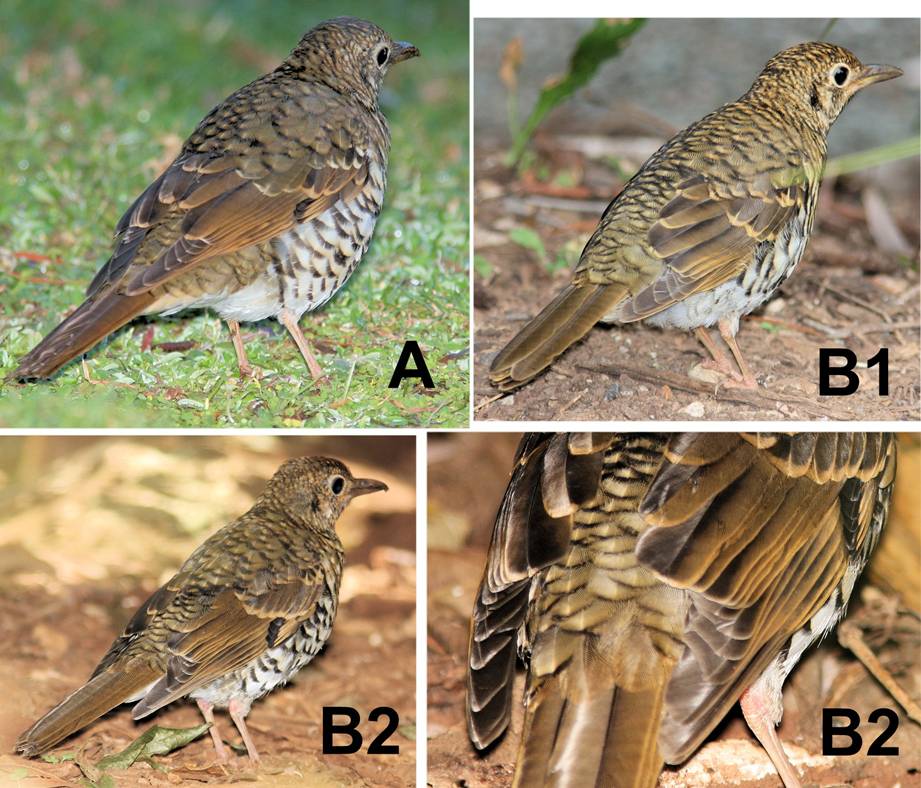Last week, being up that way, I spent
a couple of days at Binna Burra on the Lamington Plateau. This is
nominally in the overlap range of both thrushes (said to be 550m – 750m).
I saw possibly 4 different birds. One (A below) was distinctly
larger and ‘browner’ than another thrush it was feeding with
on the teahouse lawn. Possibly the same smaller thrush (B1 below) was
skulking under a bush a few hours later. A similar small thrush (B2
below) was feeding in leaf litter by a track about 300m away, lower down.
It is not surprising that the
fact that there are two species eluded the experts until relatively
recently. The field guides, in usual fashion, probably exaggerate the
differences. HANZAB says they differ ‘only subtly’ in the
field and suggests 7 points of difference:
1.
SONG – the most
reliable guide. All birds I encountered were silent at the time.
2.
PALE TIPPING to wing
coverts (see separate message on this)
3.
SCALING OF
UPPERPARTS – narrower black fringing in Russet-tailed
4.
TONE OF UPPERPARTS –
B more olive/greyish-brown, RT more richly brown/rufous. Photography is
notoriously bad at representing this kind of thing, but the difference between
A and B1 is roughly how it appeared in natural light (depending on your monitor
settings)
5.
SHAFT-STREAKING top
of head and upper body – B sometimes has ‘pale greyish or cream
shaft-streaks’
6.
WHITE TIPS to outermost rectrices –
broader in RT, not visible when tail folded and I didn’t see any
7.
SIZE – RT is significantly smaller, and
this is the one thing I am confident of as between ‘my’ birds


